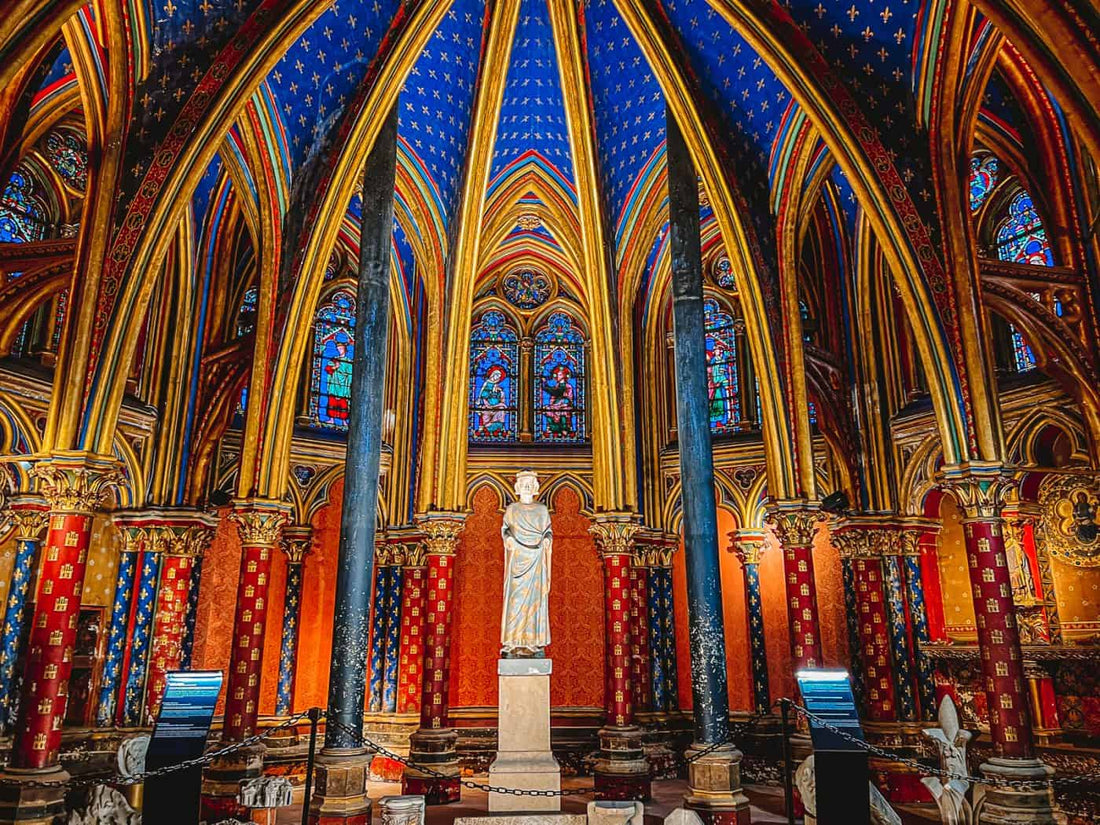Feature image: Sainte-Chapelle via Third Eye Traveller
Stained-Glass Windows
Often, when we think of stained-glass windows, we think of churches. Anyone who has grown up attending mass in a Catholic church is no stranger to the colorful stained-glass windows depicting various biblical narratives. Beginning as early as the thirteenth century in Europe, stained glass windows became a sensation in Catholic churches. Within the window frames, a glass image full of color provides a narrative from the bible. In the twenty-first century, stained glass windows still amaze and bring in many visitors to various churches solely for their art. Stained-glass windows are seen in churches all over Europe and the United States.
To begin, what are stained-glass windows? There are various types of stained-glass windows: Romanesque, Gothic, and Renaissance Stained Glass. There was no single artist who developed stained glass windows. They were created and made by various artists all over the world. Nevertheless, no matter where the artist came from, they all used color and glass for their windows. According to The American Vision, “The purpose of stained-glass windows, however, is not to allow people to see outside, but to beautify buildings, control light, and oftentimes to tell a story.” The five churches below, in various parts of the world, are a combination of basilicas and chapels offering narratives through their windows.
Sainte-Chapelle
In Paris, France, the Sainte-Chappelle was built during the 13th century by Louis IX. The chapel is a royal chapel with architecture in the Gothic style. Inside the chapel, the stained-glass windows are 50 feet in height, and each monumental window depicts a scene from the bible. For example, the chapel has approximately 15 stained-glass windows. In addition, all the windows consisted of “1113 scenes of the Old and the New Testament telling the history of the world, according to the Bible, until the arrival of the relics in Paris, then the Apocalypse is represented in the rose window.”
La Sagrada Familia
Shifting over to another country – Barcelona, Spain, is the home of La Sagrada Familia. This massive Catholic church was built and designed in 1882 by Antoni Gaudi. La Sagrada Familia is famous for being unfinished and for its incredible architecture, which consumes the exterior and interior. Stained glass windows can be found within the architecture. Looking at the top of the church’s whimsical Gothic towers, mesmerizing mosaics cover the glass windows. The windows are multicolored, ranging in shape and color scheme, making “basilica's Avant- grade intervals.”

The Rosary Chapel
Also, in France, specifically in Venice during the 21st-century, The Rosary Chapel was built between 1943 and 1949. The chapel was designed by Henri Matisse, and the windows consist of Henri’s famous series of cut-outs. Over the course of a whole wall, the stained-glass windows are displayed decked out with blue. Unlike the other stained-glass windows mentioned in this article, the Rosary Chapel’s stained-glass windows did not reveal any biblical narratives.

King College Chapel
In England, inside the University of Cambridge lies King College Chapel. The Gothic chapel, built in 1515, is famous for its “treasure of love of narrative windows.” The iconography features both religion and royal motifs, illustrating the artistic advancements of England’s late Gothic period.

The Chapel of Thanksgiving
Lastly, outside of Europe in the United States – specifically Dallas, Texas is the Chapel of Thanksgiving. This contemporary chapel was built in 1976 and celebrates “the concept of giving thanks as a universal, human value.” Due to the namesake copying the traditional holiday celebrated in November, the chapel honors the Thanksgiving holiday through a spiraling-stained glass window that twists and changes color. The spirally- stained glass windows allow sunlight to come through the chapel, and it spirals down, giving thanks – metaphorically speaking- just like a spiraling galaxy in outer space.
For centuries, viewers have been amazed by stained-glass windows. They offer an addition to churches, apart from how we’re raised and educated from the Bible. Stained-glass windows offer an artistic visual of classical narratives we’ve been told.
©ArtRKL™️ LLC 2021-2024. All rights reserved. This material may not be published, broadcast, rewritten or redistributed. ArtRKL™️ and its underscore design indicate trademarks of ArtRKL™️ LLC and its subsidiaries.







